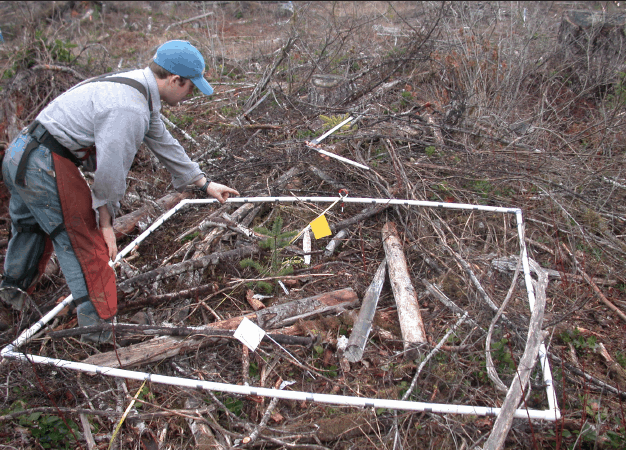
While researching a future post yesterday, I came across this in the Bend Bulletin
Bend Dog Attacked by Deer in Backyard.
Steven George, a biologist with the Oregon Department of Fish and Wildlife in Bend, said humans aren’t really in danger of an attack — but if there’s a reason, they can go after dogs.
“The deer don’t differentiate between whether it’s a domestic dog or coyote,” George said. “They see a dog as a predator to them. It’s something that wants to hurt them, or even kill them. And so they’re going to be fairly defensive, and they can be defensive to the point of being aggressive toward that animal.”
George said attacks like this aren’t an everyday occurrence, and happen maybe once a month. And, in in the fall, deer are less likely to be aggressive compared to the spring.
“This time of the year, it’s usually a buck that’s associated with any kind of attack, but not always,” George said. “In the spring, it’s more normal, typically, a doe or a doe with a fawn associated with it.”
George said the most important thing people can do is keep their dogs on a leash.
“Typically, 99 percent of the time, when a dog gets injured, it’s because it’s not leashed — and it takes off after the deer,” George said.
Then, serendipitously, Terry Seyden sent this article “America Gone Wild” from the Wall Street Journal. The article is by Jim Sterba and adapted from his book “Nature Wars: The Incredible Story of How Wildlife Comebacks Turned Backyards into Battlegrounds” to be published Nov. 13.
There’s a great photo in the article.
Below are some excerpts.
This year, Princeton, N.J., has hired sharpshooters to cull 250 deer from the town’s herd of 550 over the winter. The cost: $58,700. Columbia, S.C., is spending $1 million to rid its drainage systems of beavers and their dams. The 2009 “miracle on the Hudson,” when US Airways LCC -0.16% flight 1549 had to make an emergency landing after its engines ingested Canada geese, saved 155 passengers and crew, but the $60 million A320 Airbus was a complete loss. In the U.S., the total cost of wildlife damage to crops, landscaping and infrastructure now exceeds $28 billion a year ($1.5 billion from deer-vehicle crashes alone), according to Michael Conover of Utah State University, who monitors conflicts between people and wildlife.
There are several paragraphs about how trees have come back to the East.
The founders of the conservation movement would have been astonished to learn that by the 2000 Census, a majority of Americans lived not in cities or on working farms but in that vast doughnut of sprawl in between. They envisioned neither sprawl nor today’s conflicts between people and wildlife. The assertion by animal protectionists that these conflicts are our fault because we encroached on wildlife habitat is only half the story. As our population multiplies and spreads, many wild creatures encroach right back—even species thought to be people-shy, such as wild turkeys and coyotes. (In Chicago alone, there are an estimated 2,000 coyotes.)
Why? Our habitat is better than theirs. We offer plenty of food, water, shelter and protection. We plant grass, trees, shrubs and gardens, put out birdseed, mulch and garbage.
Sprawl supports a lot more critters than a people-free forest does. For many species, sprawl’s biological carrying capacity—the population limit the food and habitat can sustain—is far greater than a forest’s. Its ecological carrying capacity (the point at which a species adversely affects the habitat and the other animals and plants in it) isn’t necessarily greater. The rub for many species is what’s called social carrying capacity, which is subjective. It means the point at which the damage a creature does outweighs its benefits in the public mind. And that’s where many battles in today’s wildlife wars start.
What to do? Learn to live with them? Move them? Fool them into going away? Sterilize them? Kill them? For every option and every creature there is a constituency. We have bird lovers against cat lovers; people who would save beavers from cruel traps and people who would save yards and roads from beaver flooding; Bambi saviors versus forest and garden protectors.
Wildlife biologists say that we should be managing our ecosystems for the good of all inhabitants, including people. Many people don’t want to and don’t know how. We have forsaken not only our ancestors’ destructive ways but much of their hands-on nature know-how as well. Our knowledge of nature arrives on screens, where wild animals are often packaged to act like cuddly little people that our Earth Day instincts tell us to protect. Animal rights people say killing, culling, lethal management, “human-directed mortality” or whatever euphemism you choose is inhumane and simply creates a vacuum that more critters refill. By that logic, why pull garden weeds or trap basement rats




